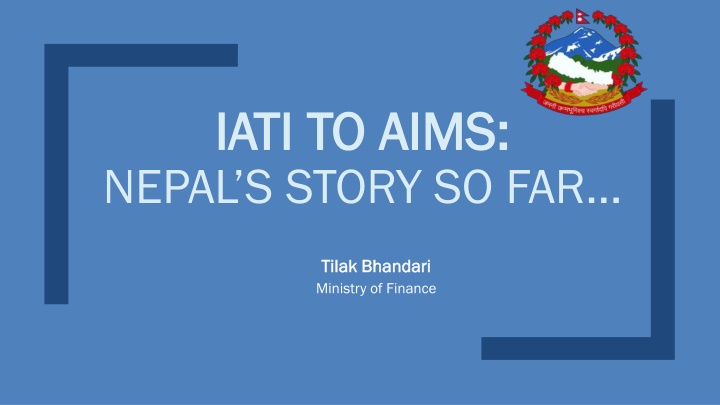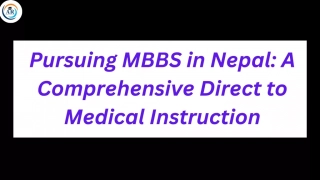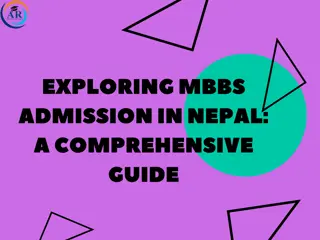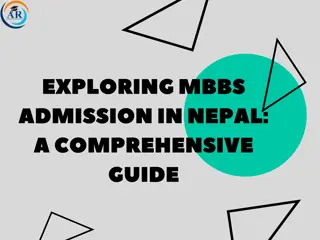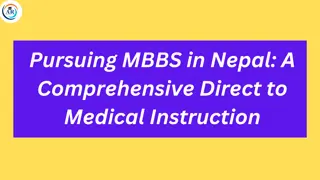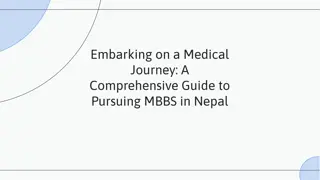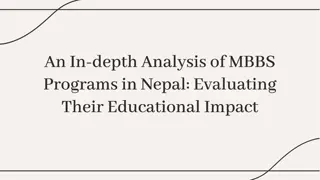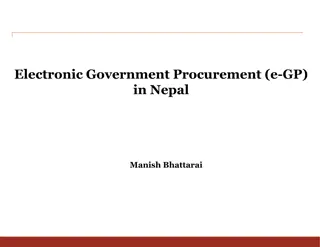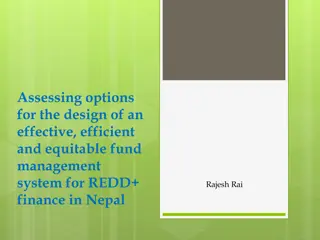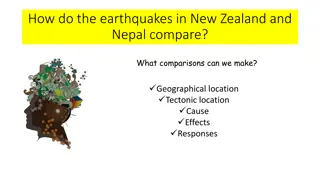Nepal's Path to Integrated Data Management: The Story Declares Progress
Nepal's Ministry of Finance is advancing towards an integrated data system with the initiative of IATI to AIMS. The journey involves establishing the AMP, launching a public portal, and leveraging IATI data for filling data gaps. Discover insights on data availability, forward funding reporting, and the importance of complete data for on-budget aid.
Download Presentation

Please find below an Image/Link to download the presentation.
The content on the website is provided AS IS for your information and personal use only. It may not be sold, licensed, or shared on other websites without obtaining consent from the author.If you encounter any issues during the download, it is possible that the publisher has removed the file from their server.
You are allowed to download the files provided on this website for personal or commercial use, subject to the condition that they are used lawfully. All files are the property of their respective owners.
The content on the website is provided AS IS for your information and personal use only. It may not be sold, licensed, or shared on other websites without obtaining consent from the author.
E N D
Presentation Transcript
IATI TO AIMS: IATI TO AIMS: NEPAL S STORY SO FAR Tilak Bhandari Tilak Bhandari Ministry of Finance
IATI to AIMS in Nepal: Key Considerations Nepal established the AMP in 2010; the public portal was launched in 2013; DCR published since FY 2010/11, with disaggregated data on both ODA and INGO (AMP data in accordance with IATI Standard) In 2017, MoF initiated development of homegrown AIMS with Nepali software developer development underway, expected launch by end of 2018 Using new system development to consider IATI data import options in new AIMS Existing AMP has well established data fields and underlying systems for collecting and validating data reporting - basis for annual Development Cooperation Report MoF focusing on IATI data for filling AMP data gaps; not for over-writing existing AMP data with IATI data or overhauling established AMP data fields MoF MoF wants IATI data imported into AIMS to offer a concrete value: not just importing wants IATI data imported into AIMS to offer a concrete value: not just importing data for the sake of it data for the sake of it MoF did rapid assessment using IATI technical team s checklist tool, to compare data availability and completeness between IATI and AMP
Headline Findings: Rapid Assessment For most data fields such as sector, commitments/disbursements, and project location- there is generally equal or better data in AMP than in IATI BUT, BUT, this is not the case for forward funding information. Several of Nepal s biggest donors are reporting this data to IATI but not to AMP. Sample findings of forward-spending data reporting in two systems: Donor Donor IATI IATI AMP AMP Asian Development Bank World Bank Group UK - DFID Reported up to 2023 Reported up to 2023 Reported up to 2024 Not reported Not reported Reported up to 2020 for some projects Reported up to 2020 for some projects UNDP Reported up to 2024
Findings in Context From government s perspective, having more complete forward-spending data is most useful for on-budget aid On-budget aid is what figures into national planning and budgeting processes Composition of on-budget aid (FY 2017/18) On/off budget aid (FY 2017/18) 22% 37% 41% 78% 22% World Bank Group Others Asian Development Bank Off Budget On Budget
Upshot Nepal s IATI-to-AIMS data import pilot will initially focus on importing forward-spending data from WB and ADB. These two donors are reporting this data to IATI but not AMP, and make up well over half of on-budget aid portfolio in Nepal 63% for last fiscal year After initial two-donor pilot, scope will expand to other donors (initially focusing on the on-budget projects) Depending on success of pilot IATI data import approach, options will be explored for further IATI data import across other data fields
Takeaways Status: Status: Design and testing of IATI import feature is in process Challenges: Challenges: matching project identifiers; considering if and how IATI data import will affect well-established business processes for data entry and validation Approach: Approach: pilot-focused, gradual expansion and upscaling to be explored Looking Ahead: Looking Ahead: populating new AIMS with forward spending data offers concrete use for planning/budgeting processes, but ensuring that this new/supplemental data is used used will require changes in business processes
